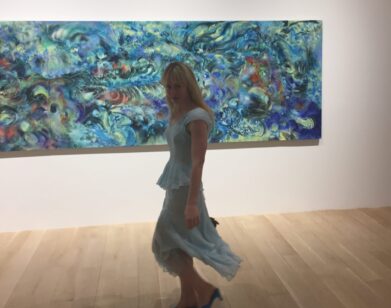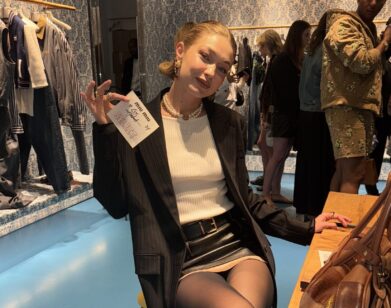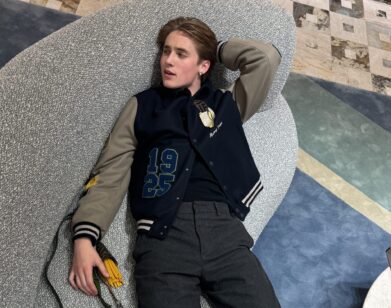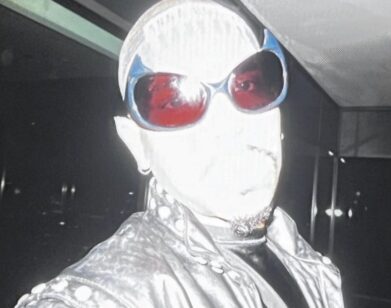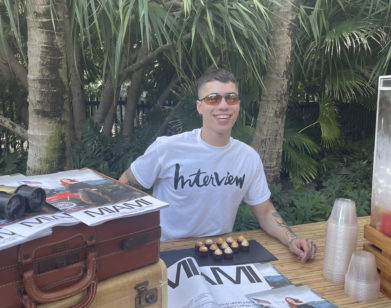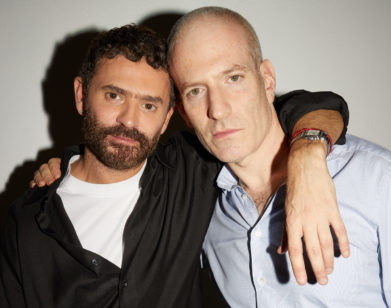ART BASEL
Photographer Texas Isaiah on Archives, Aliases, and André 3000
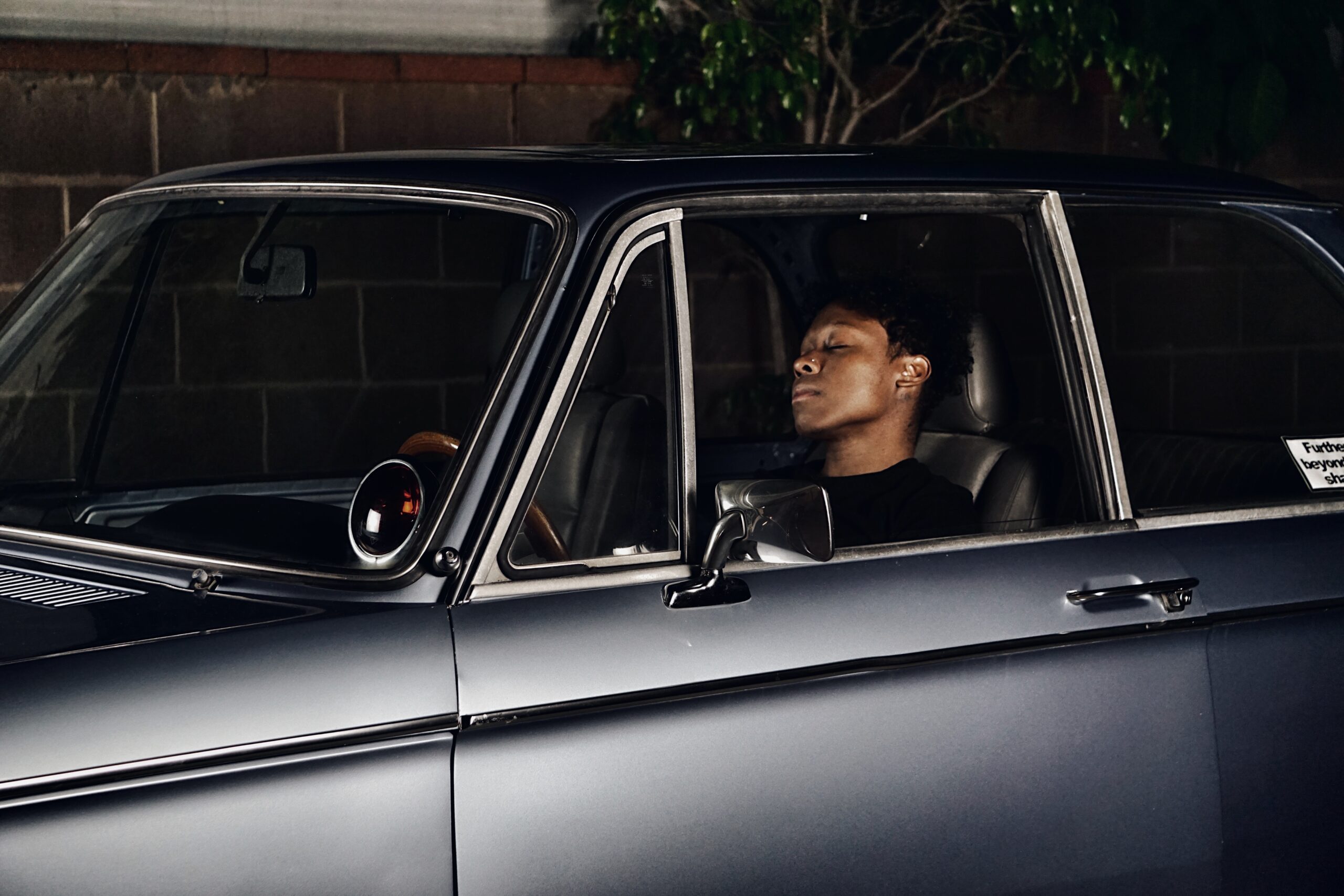
Isaiah Texas, self portait, 2023
The L.A. based photographer Texas Isaiah is concerned with capturing the contemplative moments that make up daily life, particularly for those who navigate complex and evolving identities. “I think that Black people, people of color, Brown folks, we need a variety of images of ourselves to reflect on,” he told us earlier this month, before the opening of his solo exhibition It’s the Starkness of the Day, presented by Residency Art Gallery and on view at Art Basel Miami this weekend. The show features a series of intimate portraits that grapple with the quiet moments one takes as they navigate grief. Having recently lost his grandmother and aunt within two weeks of each other, Texas Isaiah provides a window into a world where solitude, transition and reflection are prioritized. “I don’t want the editorial, the commercial, or the fashioned images to take over the archive or to be pedestaled as more important, which they often are, because I think that we enjoy fantasy and other worlds,” he explained, remarking on the sudden influx of attention many Black artists received after the 2020 protests against the murder of George Floyd. “What about the images of us in our homes being contemplative, moving through different transitions?” As the multi-hyphenate artist prepared for his Basel show, he spoke to us about growing up in Brooklyn, shooting in black and white, and his dream of one day photographing André 3000.
———
CHLOE SHAAR: Where are you right now?
TEXAS ISAIAH: I’m in Detroit at the moment.
SHAAR: Are you there for the holiday or are you just hanging?
ISAIAH: I’m just spending time with a really good friend who’s coming in from Berlin, and also my partner.
SHAAR: I love that. You’re from Brooklyn originally?
ISAIAH: Yeah. East New York, Brooklyn.
SHAAR: Do you visit often?
ISAIAH: Yeah, I go back home intentionally to visit my parents and to be in proximity to my community, and to emotionally support the development of other artists who are either from the city or who have moved there. It’s very important for me to visit as often as I can outside of work.
SHAAR: Do you enjoy L.A. as a home base though?
ISAIAH: Yeah. I think that it’s more of an internal experience there. I have a core group of friends and my home. That’s just pretty much where L.A. meets my needs.
SHAAR: Right. Which is all that you really need, I feel. Your inner circle or just the people that are keeping you together.
ISAIAH: People always ask me–which I know that you’re not asking me–this question of L.A. or New York? It’s like, you can’t compare the locations.
SHAAR: I’m also a bi-coastal person, so I get it.
ISAIAH: I think that it also conflates so much of the histories of each place, too. Which part of California are you from?
SHAAR: I am from L.A.. Tell me a little bit about growing up in New York. Have you always been interested in art and curating? Or was it something that happened as you got older?
ISAIAH: I recall some interest in the arts. But the area where I’m from didn’t have a lot of resources to maintain those programs, or didn’t have those programs at all. Art wasn’t really a staple in my household but it became more of an interest as I witnessed other people within their art practices and became curious about what that could look like for me.
SHAAR: When did you start using two first names? Or have you always used two first names?
ISAIAH: I went through a lot of different aliases. I would say the reshaping of my name had a lot to do with protection and people not feeling too familiar with me so fast. I just love the flow of Texas Isaiah.
SHAAR: I find it so intriguing because I feel like a name is supposed to be one of the most personal forms of identity.
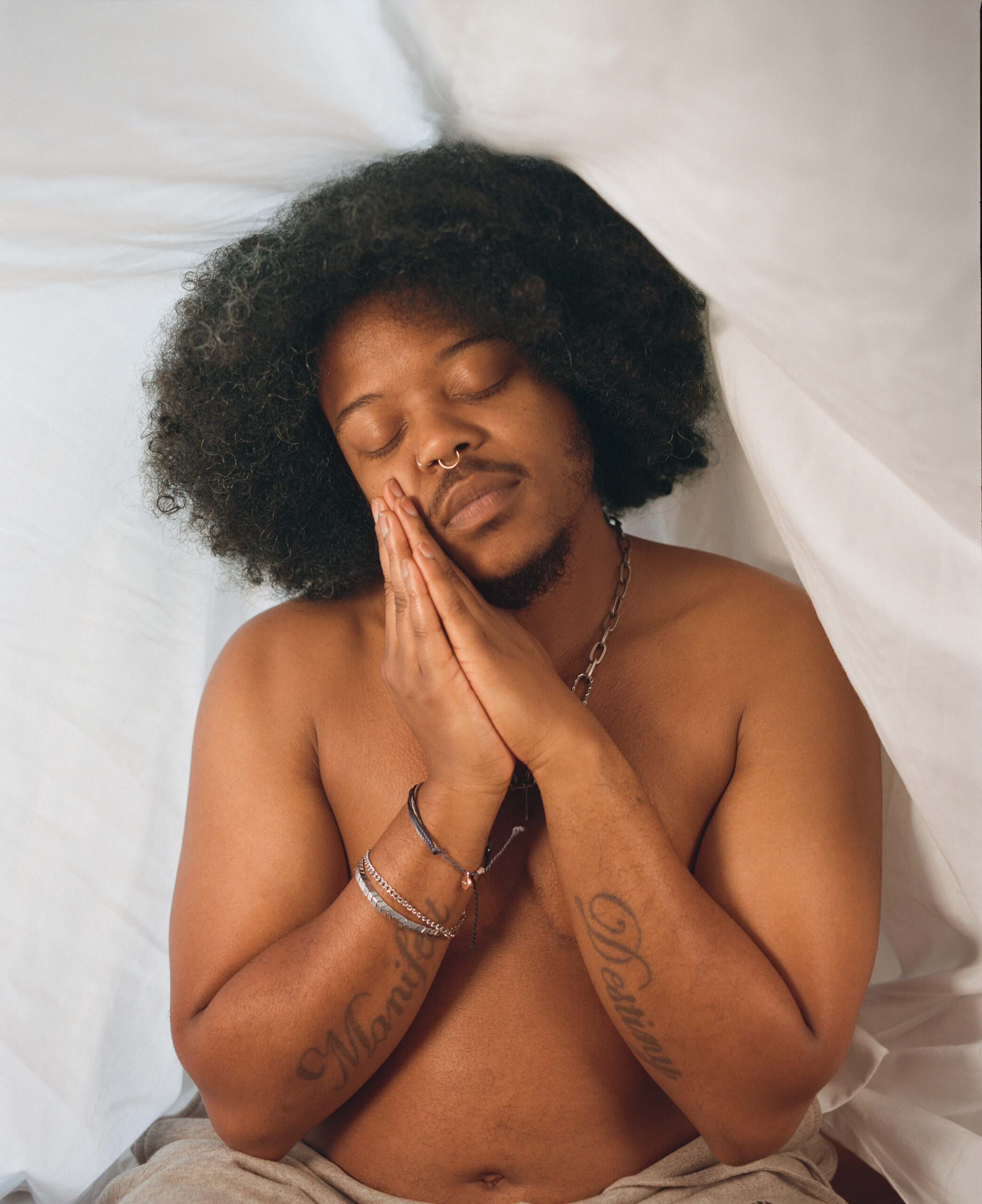
Prologue/My-Grandson’s Prayer, 2023
ISAIAH: It’s a personal testament.
SHAAR: They don’t need to know anything about you unless you want them to.
ISAIAH: Exactly.
SHAAR: What initially piqued your interest in photography? Would you say it was experiences in life that you wanted to capture?
ISAIAH: I had witnessed somebody using photography as their format of expression and I became very curious about it. It was also during a time that I feel like a lot of us experience, where people are attempting to tell you where you need to go in your life. I don’t think that I had the capacity to build a formal relationship with photography around that time, but I still practiced it. Then I started to develop a more intimate relationship when I got into music. I used to take photos of bands, specifically hardcore and punk bands. The practice started in nightlife. A lot of live shows, nightlife events in New York City. I wasn’t technically allowed to be in those spaces because I was underage.
SHAAR: That’s the life of a New York kid.
ISAIAH: Yeah, definitely. 2013 was the year that I communicated to others that it was the beginning of a career, and the development of a more serious, intimate relationship with photography. It’s been a very unconventional journey into photography and not anything that was steered by academia, which I’m really grateful for, because I think that I learned a lot from my peers and my friends who are immersed in the art world.
SHAAR: I think that that’s one of the things that puts certain people apart from others, ones that are self-taught and base their craft off of their actual experiences and identities. Capturing a potion and the rawness of life, that’s not something that you learn in a textbook. And as your identity grows, that changes your craft as well.
ISAIAH: I mean, sometimes. If you allow it to.
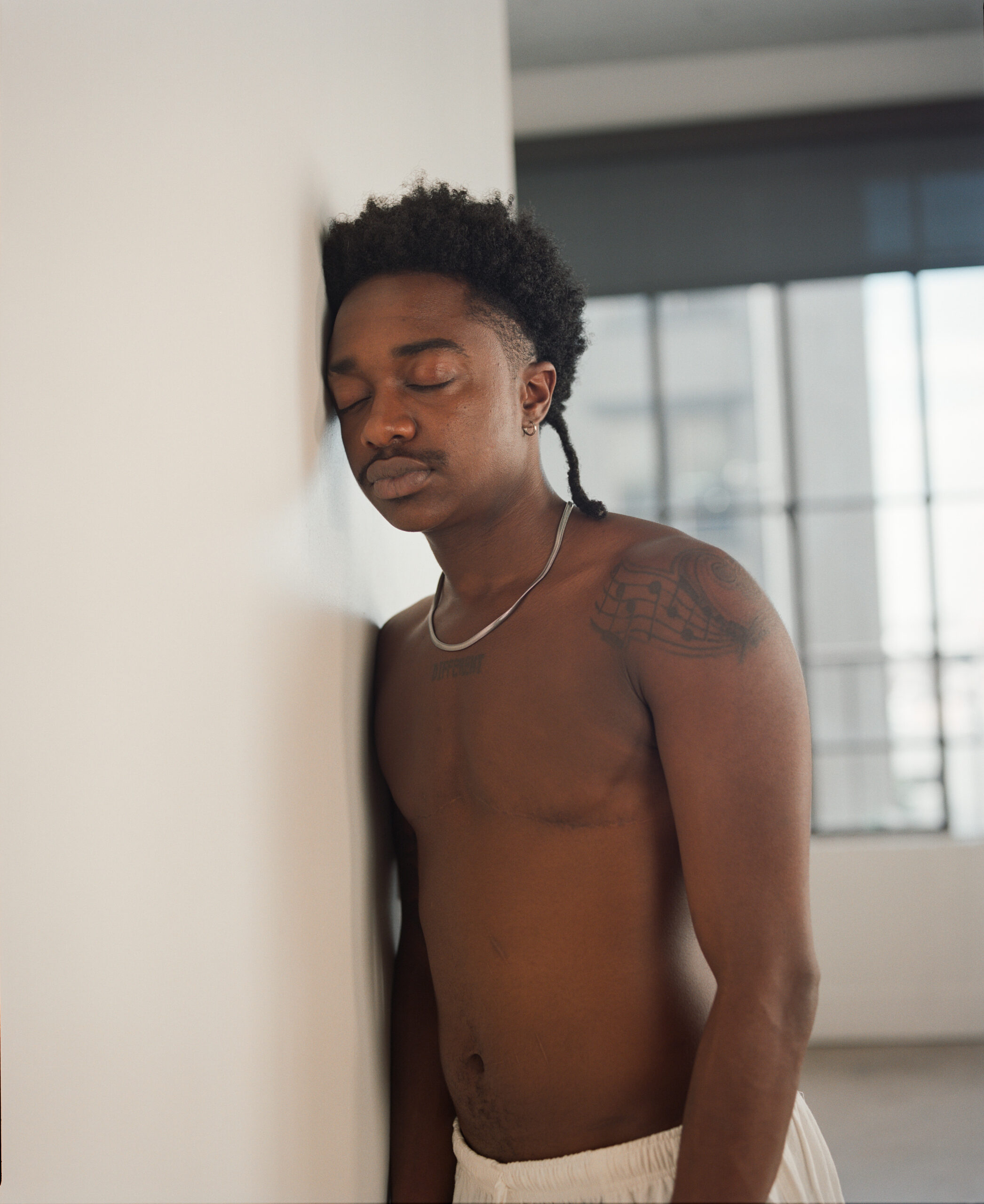
Pray You Hear My Touch 2, 2023
SHAAR: Has your identity as a Black trans person changed your perspective on your art at all? Does your identity bleed into your art or do you try to separate the two?
ISAIAH: No, I don’t think that there’s any separation. I think that it always informs the work. Even the ways in which I attempt to have fun in my work is informed by so many of my experiences. This doesn’t only have to do with gender. I think that when you are you, when you’re embodied, when you have accepted your embodiment, you don’t necessarily have any other choice but to see the world as is. A lot of people fight against that because there is a lot in the world that is devastating and disappointing. But that’s not all that exists. I think that there is a lot of hope, faith, and joy that I practice as well. I’m interested in the development of an archive, as well as collaborating with other people who are interested in developing archives of intentionally marginalized folks, who were either taken advantage of within the photographic format or have never really been present.
SHAAR: I love your use of the word archive because when I was looking through your work, it really felt like an archive of Black and Brown voices, people that aren’t always seen in media. Since 2020, there’s been this push for a certain kind of perspective in the fashion and art worlds. But your photographs depict the actual experience.
ISAIAH: As somebody who created and attempted to live off of personal work for a while before 2020, when that year approached, all of these editorial and commercial jobs started flooding in. I’m really grateful for that.
SHAAR: I’m sure the inbox was filled.
ISAIAH: Yeah, for a lot of artists, Black artists in particular. I was never an artist who called or emailed editors. But I know a lot of other visual narrators who did. It was a little bit confusing and daunting to be emailing somebody for a year and then have them respond to you because of the things that were going on in the world, things that have been going on for a very long time. It felt extractive for a lot of photographers. I’m grateful that I was able to continue to lean into my personal practice. I don’t want the editorial, the commercial, or the fashioned images to take over the archive or to be pedestaled as more important, which they often are, because I think that we enjoy fantasy and other worlds. For me, I’m always thinking, what about this world? What about the images of us in our homes being contemplative, moving through different transitions? And they don’t always have to be immersed in grief, but they’re immersed in all of these different emotions. I think people jump to conclusions and they’re like, “Oh, you don’t like fashion?” And I’m like, “No, I love fashion, I love style.” There’s nothing wrong with that. But I think that Black people, people of color, Brown folks, we need a variety of images of ourselves to reflect on.
SHAAR: Well, there weren’t any being taken for so long.
ISAIAH: I love Renata [Cherlise] who does Black Archives. What I really love about her Instagram and her archive practice is that it reminds me that we do have a lot of images, but they’re lost. There are an abundance of images, but they’re not prioritized, or they’re lost and then they have to be found.
SHAAR: Certainly. Your profile picture right now is inspiring me a little bit.
ISAIAH: I apologize for not being on video. My partner and I got a new puppy. Her name is Aurora, she’s a Fitzu-Maltese mix. She’s sleeping on my foot right now, I think she likes hearing us talk. But if I’m on video, she’ll just be like, “Hey, can you give me some attention?”
SHAAR: Don’t even worry about it. Your profile picture inspired me because I feel like not everyone is interested in shooting in black and white. I noticed that for so many of your images, you have just as many black and white as you do in color. Is there a particular reason that you’re drawn to black and white?
ISAIAH: I took a lot of black and white images before I made my way to California.
SHAAR: What year was that?
ISAIAH: That was 2016. That was the year that Pulse [Orlando nightclub shooting] happened. And that was the year that Ghost Fire happened in Oakland. My friend Andre D. Wagner gave me a Yashica camera. I would develop my own film, scan my own film. I was very tethered to the process. I was also visiting Studio Museum a lot because I was so intrigued by that space, which was introduced to me by Kimberly Drew when she worked there. I would photograph the artists in residence, Eric Mack, Sadie Barnett, Lauren Halsey, Jordan Castile, EJ Hill within the next year. When I moved to L.A., I didn’t have access to that practice. I mean, this is public knowledge, but I was houseless for about eight months. So, I was between Oakland and L.A. trying to find my foot in. I was also very intrigued by just how colorful L.A. was. Walking around the neighborhoods, I’m like, “Wow, there’s so much plant life here.” I love plants.
SHAAR: That’s what I miss.
ISAIAH: When I was in Brooklyn, I wasn’t a good plant dad. I didn’t know how to interact with that section of nature yet. I was just so intrigued by the color. So, that’s when the transition happened. I still love black and white, and I’m thinking about going back to the foundation next year as I’m prepping for projects.
SHAAR: Is there a dream subject that you would love to shoot?
ISAIAH: People have been asking me this a lot lately. I would say Regina King, André 3000, and Wu-Tang.
SHAAR: Wait, did you listen to any of the new flute album? [New Blue Sun]
ISAIAH: I haven’t intentionally sat down and listened, but it’s been in the background of the house lately.
SHAAR: I listened a little bit when I was cooking the other night, and it was so good, obviously. It’s definitely a wind down type of album.
ISAIAH: Yeah. I’ve always wanted to photograph André 3000 and then not have the pictures be public. Just the experience of it. I love his relationship to privacy.
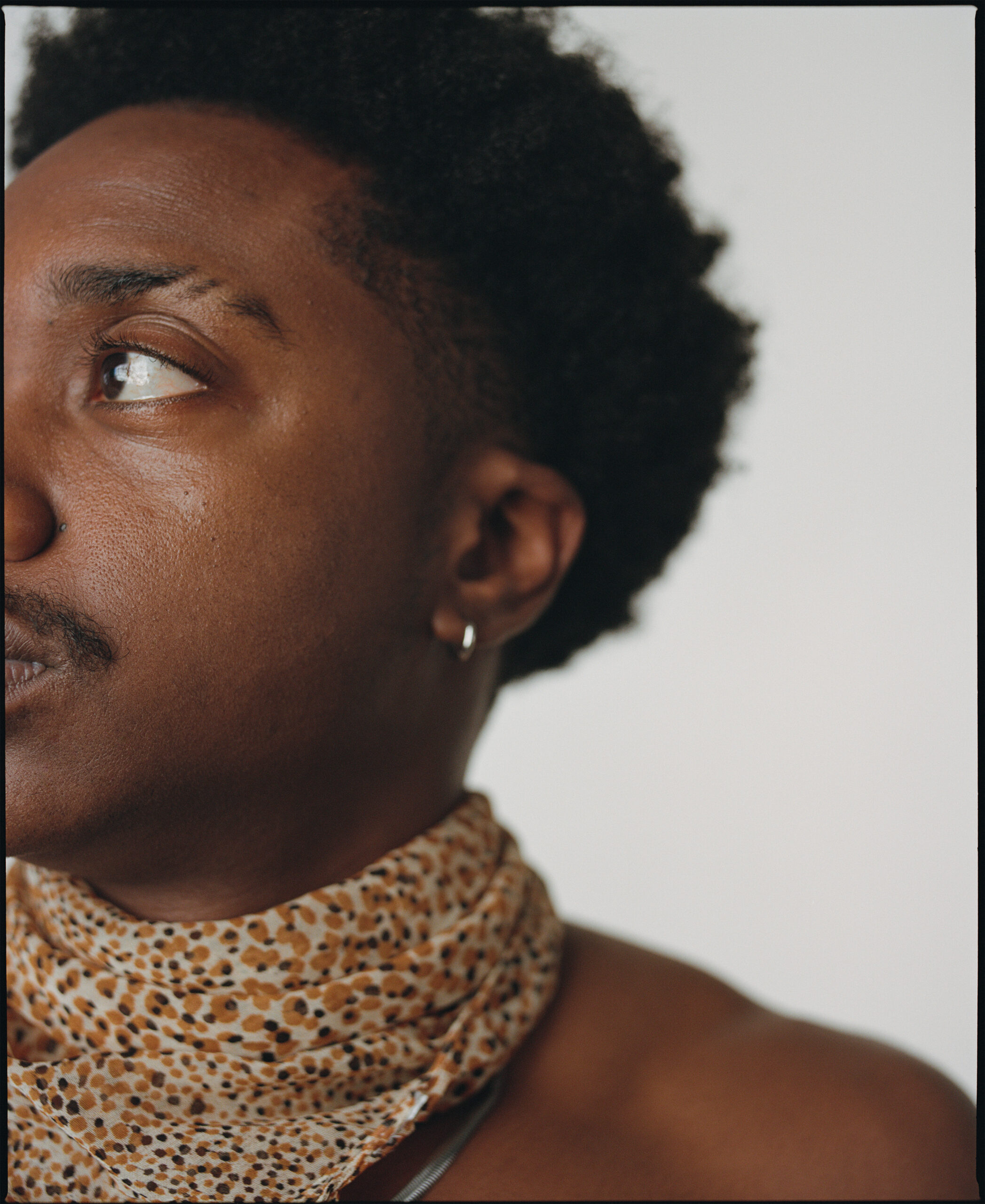
Private Delight, 2023
SHAAR: I love that. Do you think photography is the only medium that you see yourself diving into?
ISAIAH: No. I did a photographic and video series for Google Creators Lab, which is an incubator program that supports artists to make whatever they want to make, but it has to be made on the Pixel. I did a project with my partner, who is a Detroit-based artist. Our name is KESSWA, and we just collaborated and made this beautiful project called, I May Not See Myself As Others See Ne Not. It pays homage to Samuel Foso, who’s a photographer and uses autofiction, which is autobiography and fiction to recount one’s life. That involved video and that was a lot of fun. I also incorporate altars in some of the still work that I’ve done, and people call those sculptures. I wouldn’t use that term for those altars, they’re just simply altars. But I’m also thinking about how to create more things with my hands. I think that I’m moving in the direction where I want to build things and have that be in conversation with moving images and stills.
SHAAR: I love that. What’s an average day like for you? Are you a morning person?
ISAIAH: Yeah, I am. It depends on how jet-lagged I am and which city I’m in. Detroit is pretty cold right now, so that’s also the privilege of living in L.A. So I’ve been finding myself being a little bit more sleepy. I love to wake up with the sun if I’m able to, and I love quiet moments. [Isaiah’s dog wakes up] What’s up? She’s making noises.
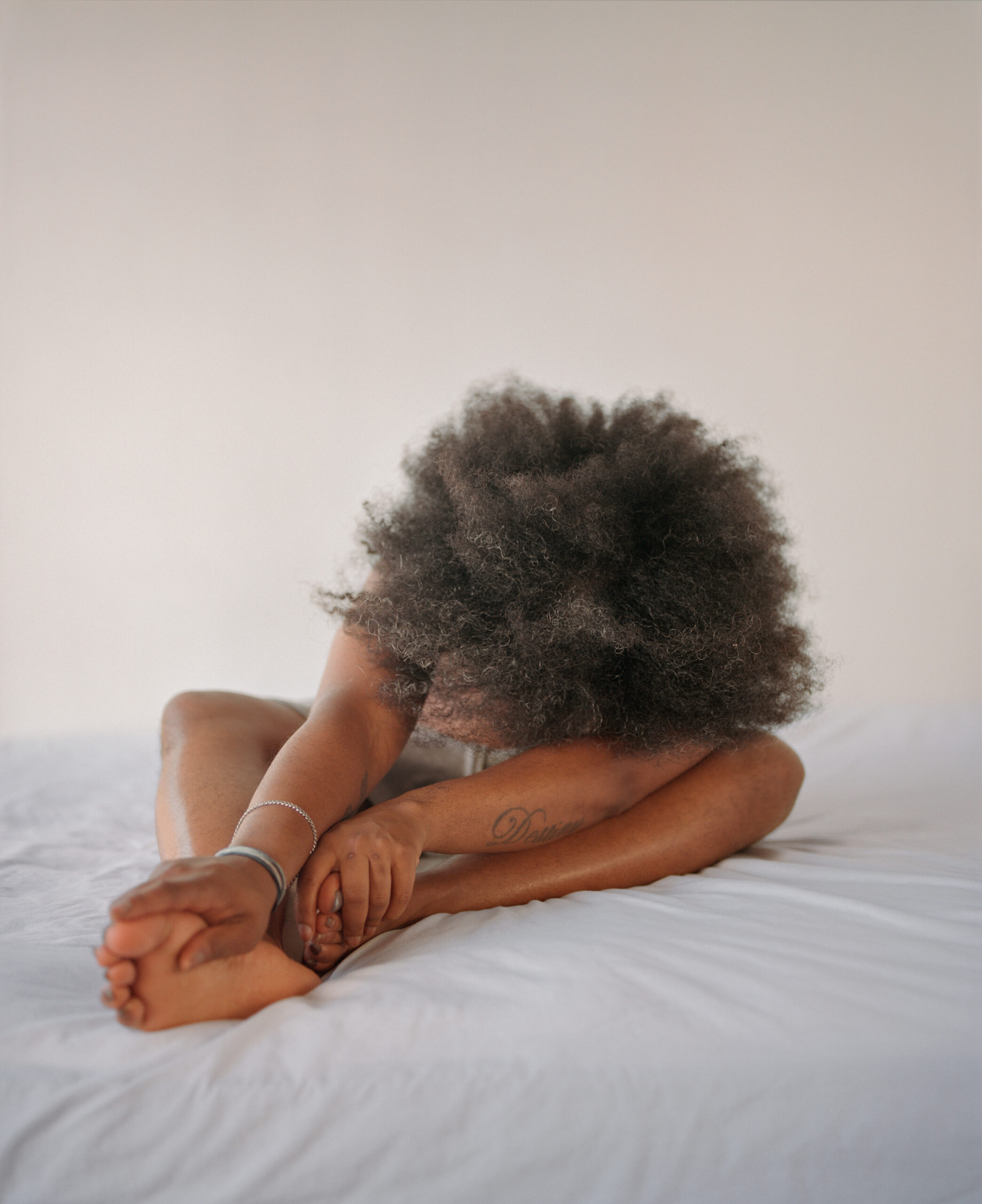
A Recollection – My Grandson’s Stretch, 2023

